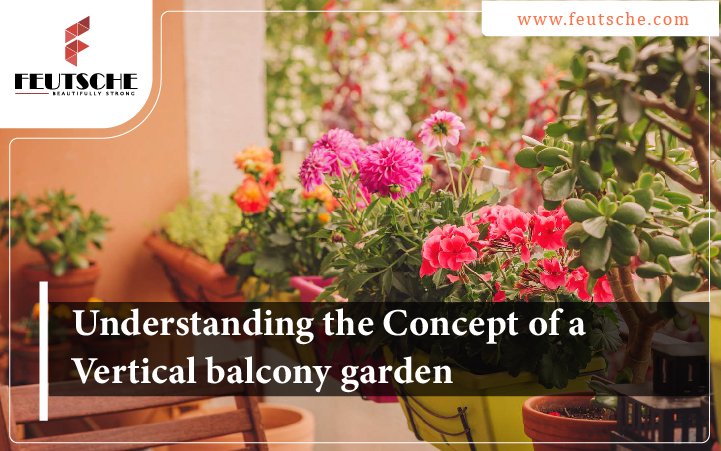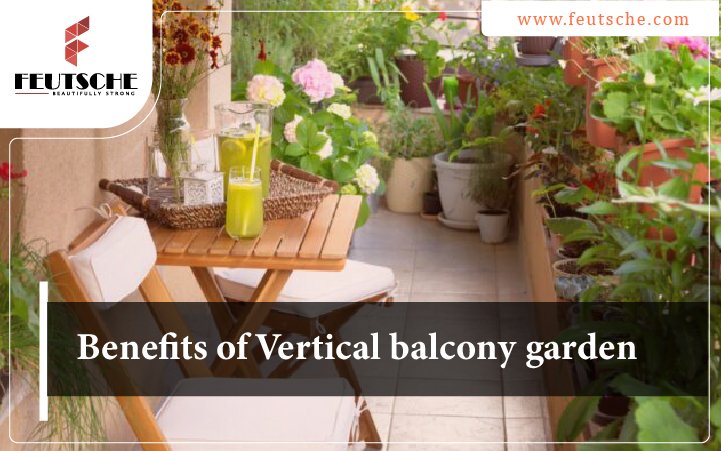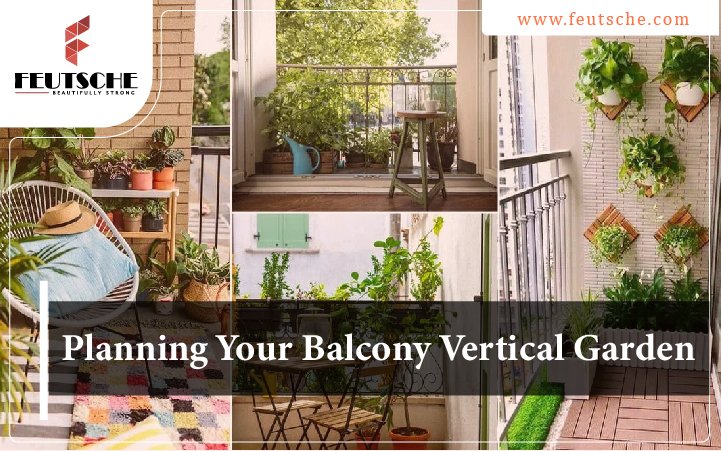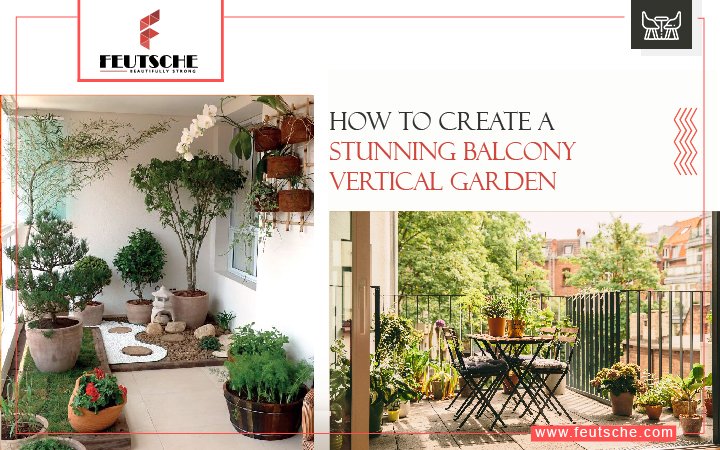Vertical Balcony Gardens are a fantastic way to transform a small outdoor space into a lush, green oasis. These gardens utilize vertical space to grow plants, making them ideal for apartments, condos, or homes with limited yard space. In this article, we will explore the concept of a Vertical balcony garden and guide you on how to create a stunning, verdant haven right outside your window.

Understanding the Concept of a Vertical balcony garden
A Vertical Balcony Garden is a creative arrangement of plants that grow vertically instead of horizontally. It maximizes the available space by utilizing walls, railings, and hanging structures to create a visually appealing and functional garden. Whether you have a spacious balcony or a tiny one, a vertical garden allows you to grow various types of plants, flowers, and even herbs, making it a versatile and customizable solution. A Vertical Balcony Garden brings lush greenery and vibrant colors to your limited outdoor space, transforming it into a serene oasis.

Benefits of Vertical Balcony Garden
Vertical Balcony Gardens offer numerous benefits, making them an attractive and practical option for urban dwellers and homeowners alike. Utilizing vertical planters and hanging pots, a vertical balcony garden maximizes the use of vertical space, allowing you to grow a variety of plants even in small areas.
Space-efficient: Vertical balcony garden maximize limited space in urban environments. By utilizing vertical surfaces like walls and railings, they allow you to grow plants without taking up valuable floor space.
Improved air quality: Plants are natural air purifiers, filtering out pollutants and toxins from the air. A Balcony Vertical Garden can help improve the air quality around your living space, making it healthier for you and your family.
Noise reduction: The combination of plants and their foliage can help absorb and dampen noise, making your balcony area quieter and more peaceful.
Cooling effect: Greenery can provide a cooling effect in hot weather, reducing the overall temperature of your balcony and the immediate surroundings. This can be especially beneficial in urban areas with high temperatures.
Increased biodiversity: Vertical gardens attract various forms of wildlife, such as birds, butterflies, and beneficial insects. This contributes to biodiversity and encourages a healthier ecosystem.
Food production: If you opt to grow edible plants in your vertical garden, you can enjoy fresh produce right at home. Herbs, small vegetables, and even fruits can thrive in vertical garden setups.
Stress reduction: Being around nature and greenery has been shown to reduce stress and promote a sense of well-being. Having a vertical garden on your balcony provides a calming and relaxing environment.
Privacy and screening: Depending on the choice of plants, a vertical garden can act as a natural privacy screen, shielding your balcony from prying eyes and creating a more intimate space.
Sustainable living: Embracing a vertical garden lifestyle promotes sustainable living by reducing the carbon footprint associated with transporting produce from far-off places. Additionally, you can use recycled materials for the garden’s construction.
Accessibility: Vertical gardens can be designed at various heights, making it easier to tend to the plants without bending over or kneeling. This is particularly beneficial for people with mobility issues or those who prefer gardening at waist or eye level.

Planning Your Balcony Vertical Garden
A successful vertical garden starts with thoughtful planning. Let’s explore the key steps to consider:
Assessing Your Space:
Before diving into designing your vertical garden, start by assessing your balcony space. Take measurements of the available area and note any architectural features or obstacles such as railings, walls, and overhead structures. Understanding these limitations will help you make informed decisions during the planning process. Whether adorning a blank wall or transforming a dull corner, an artificial vertical garden acts as an eye-catching statement piece.
Determining Sunlight Conditions:
Observe the amount of sunlight your balcony receives throughout the day. Different plants have varying sunlight requirements, and this will influence your plant selection and positioning. Full sun, partial sun, or shade-loving plants will thrive under specific conditions. Consider using shade cloth or installing adjustable canopies to provide shade for delicate plants if your balcony receives intense sunlight. With UV-resistant foliage and weather-proof design, an artificial vertical garden retains its beauty even in the harshest climates.
Choosing the Right Plants:
Selecting the appropriate plants is crucial for a successful vertical garden. Look for plants that thrive in containers and have compact growth habits. Herbs like basil, mint, and parsley, as well as small vegetables like cherry tomatoes and lettuce, are excellent choices for balcony gardens. Succulents and trailing plants like ivy and ferns can add cascading beauty to your vertical garden. Perfect for both indoor and outdoor settings, an artificial vertical garden adds a touch of natural serenity to any living or working space.
Vertical Garden Structures:
There are various ways to set up your vertical garden, and the choice depends on your preferences, space, and budget. Some popular options include:
- Wall-mounted planters: Install planters directly on your balcony walls, making efficient use of vertical space.
- Vertical trellis systems: These systems allow climbing plants to grow vertically, providing both beauty and privacy.
- Pallet gardens: Recycle wooden pallets to create a multi-level garden with multiple planting pockets.
- Hanging planters: Utilize hooks or a railing-mounted system to hang planters at different heights.
- Pocket planters: Fabric or felt pocket planters can be attached to walls and filled with a variety of plants.
Soil and Drainage:
Choosing the right soil mix is crucial for the health of your plants. Use a high-quality potting mix enriched with nutrients and good drainage properties. Proper drainage is essential to prevent waterlogged roots, so ensure that your planters have drainage holes.
Irrigation and Watering:
Vertical gardens can be prone to drying out quickly, especially in warmer climates. Consider installing a drip irrigation system to ensure consistent watering. Alternatively, self-watering planters can help maintain moisture levels for longer periods. Set up a watering schedule and regularly check the moisture levels of your plants.
Supporting Structures:
Some plants may require additional support as they grow. For example, trellises, stakes, or bamboo poles can help climbing plants grow upwards. Plan for these supporting structures during the initial setup.
Managing Weight and Safety:
Ensure that your balcony can support the weight of your vertical garden. Soil, planters, and structures can add considerable weight, so consult with a structural engineer if you have any concerns. Additionally, secure all planters and structures properly to prevent accidents or damage during adverse weather conditions. Embracing the latest advancements in horticulture, an artificial vertical garden offers hassle-free maintenance and year-round vibrancy.
Creative Arrangement and Aesthetics:
Aesthetics play a significant role in the success of your vertical garden. Arrange plants with varying heights, colors, and textures to create an eye-catching display. Consider incorporating decorative elements such as fairy lights or colorful pots to add personality to your green space.
Maintenance and Care:
Regular maintenance is essential to keep your Vertical Garden thriving. Prune and trim plants as needed, remove dead leaves, and monitor for pests and diseases. Fertilize your plants regularly to ensure healthy growth. Enjoy the beauty of nature year-round with an evergreen vertical garden artificial plants, featuring an assortment of handcrafted artificial plants that mimic the real thing flawlessly.
Conclusion
Elevate your exterior façade with a breathtaking vertical garden artificial plants installation, showcasing an artistic arrangement of artificial plants that add curb appeal to your home or business. Creating a stunning Balcony Vertical Garden is a rewarding endeavor that allows you to connect with nature and personalize your outdoor space. An Artificial Vertical Garden is a breathtaking fusion of nature and innovation, bringing lush greenery to urban spaces with limited ground area. By following the steps outlined in this article and using the right combination of natural and artificial elements, you can craft a captivating green sanctuary that will bring joy and tranquility to your life. So, roll up your sleeves and start building your very own vertical paradise!
